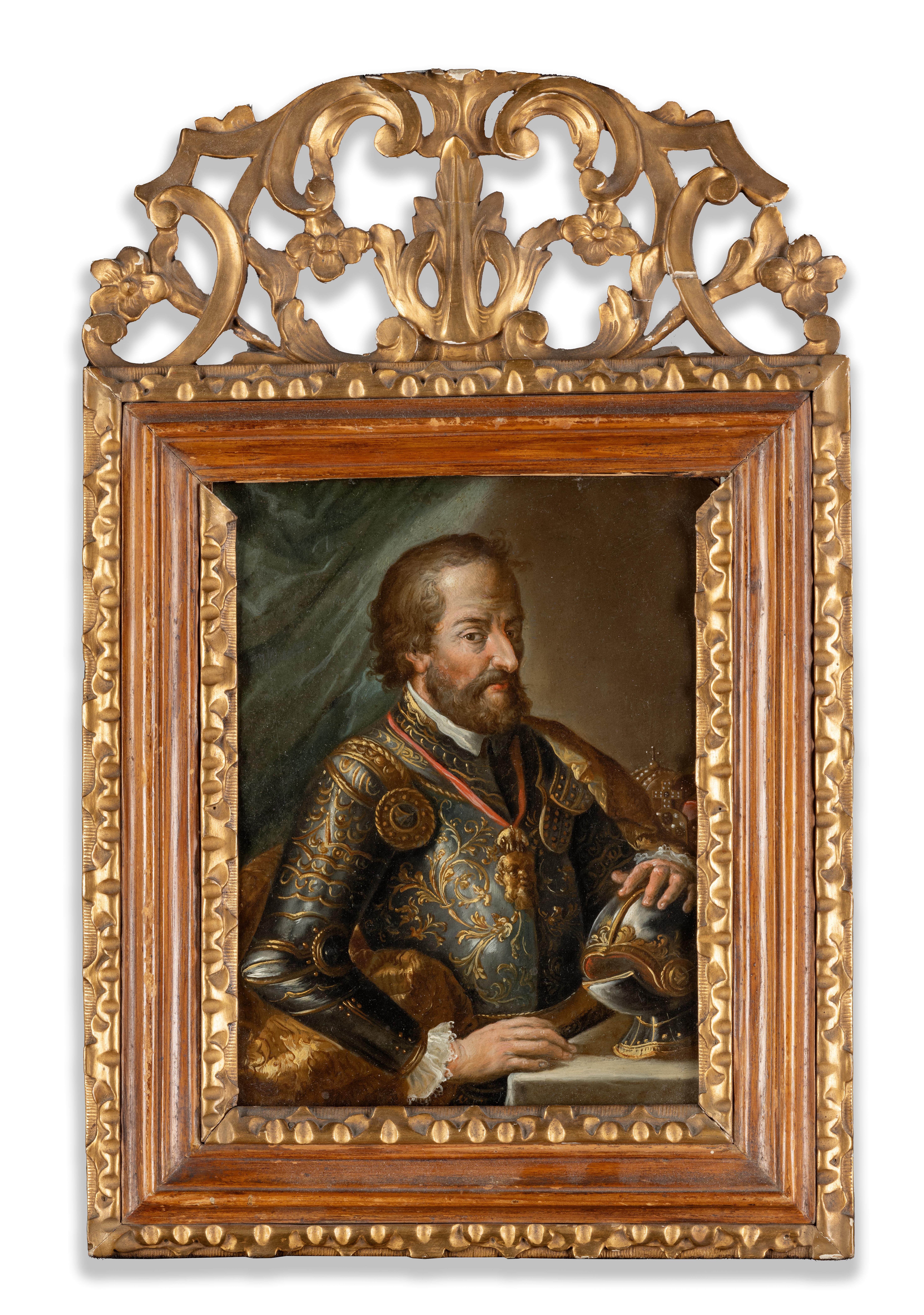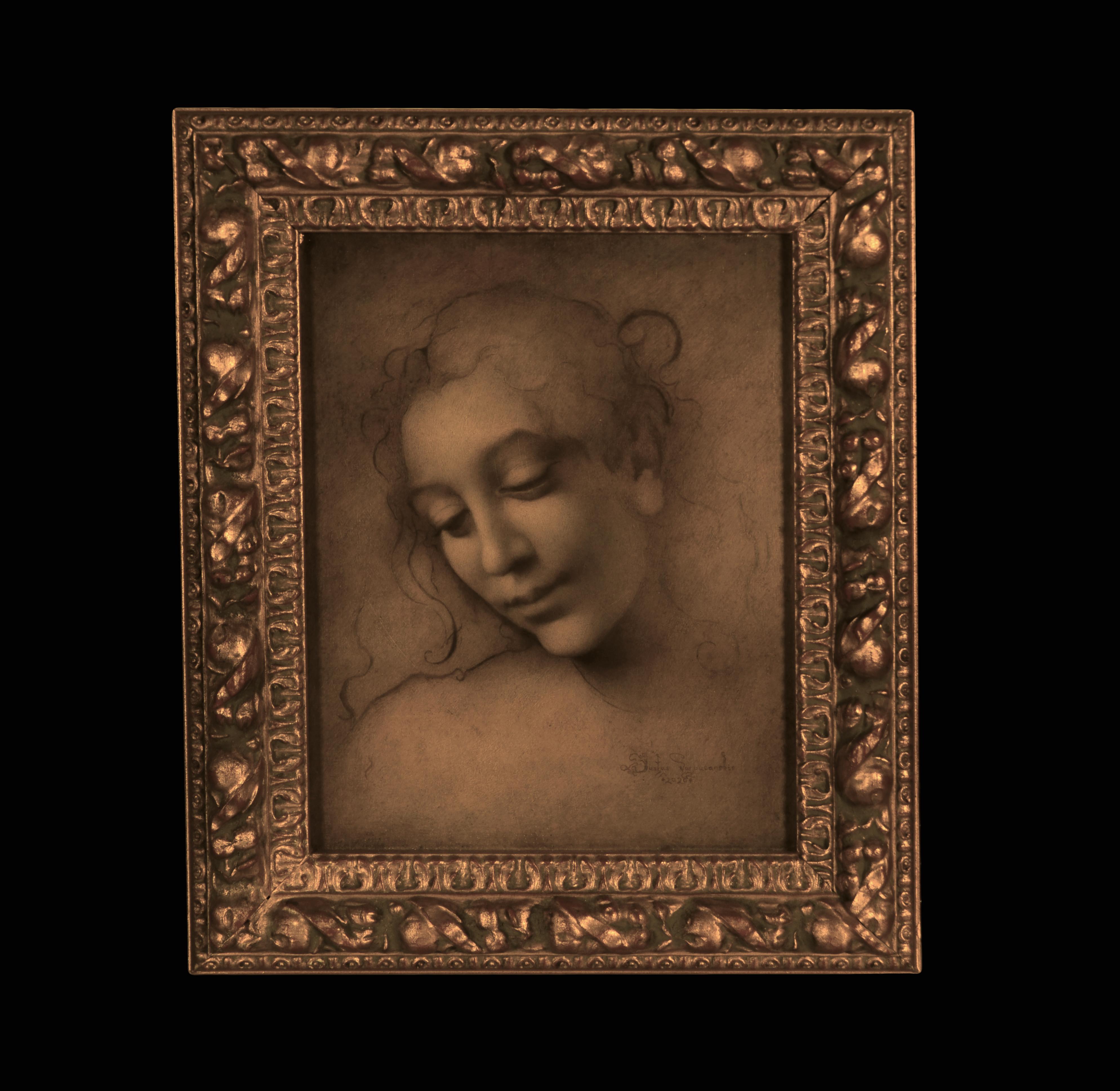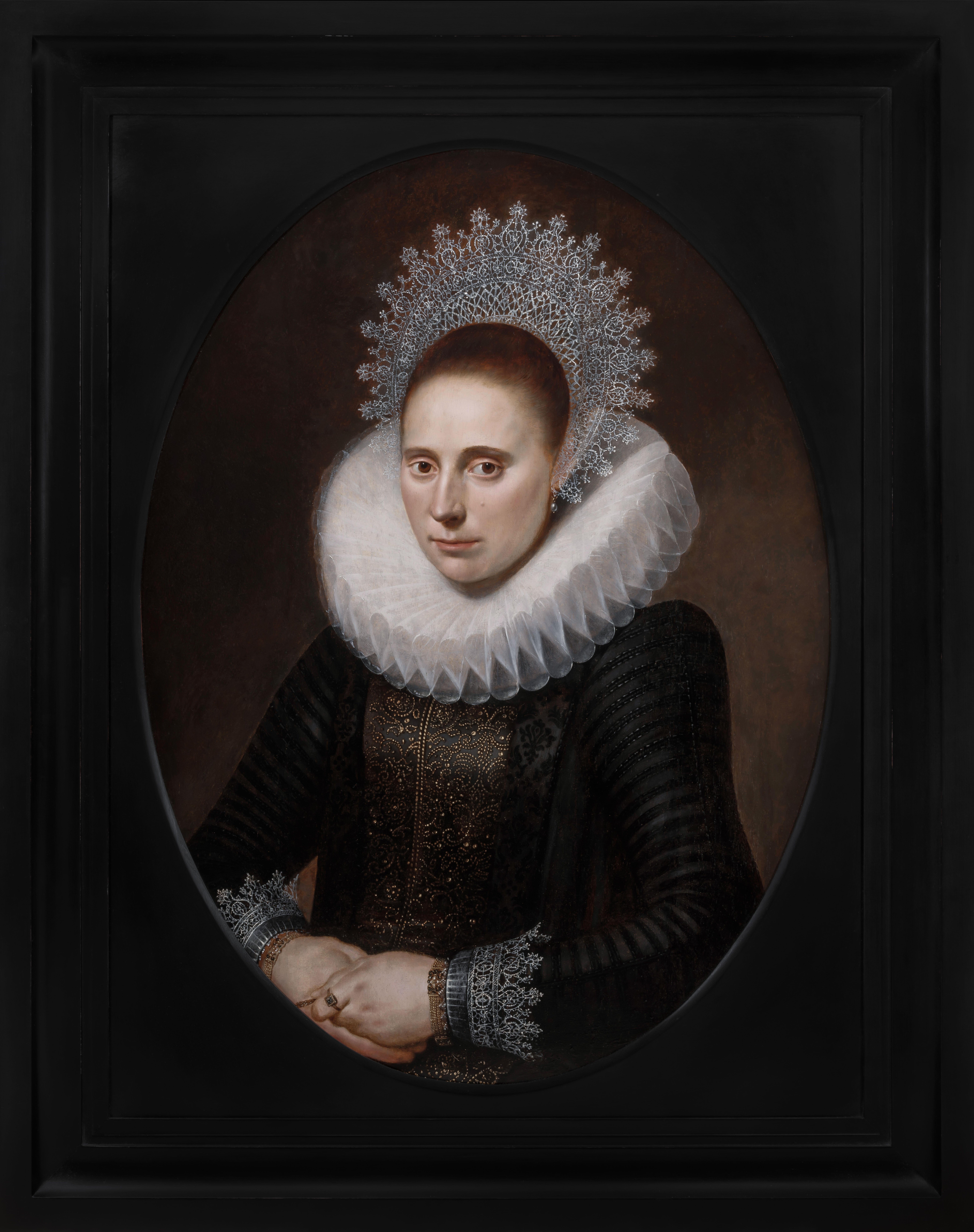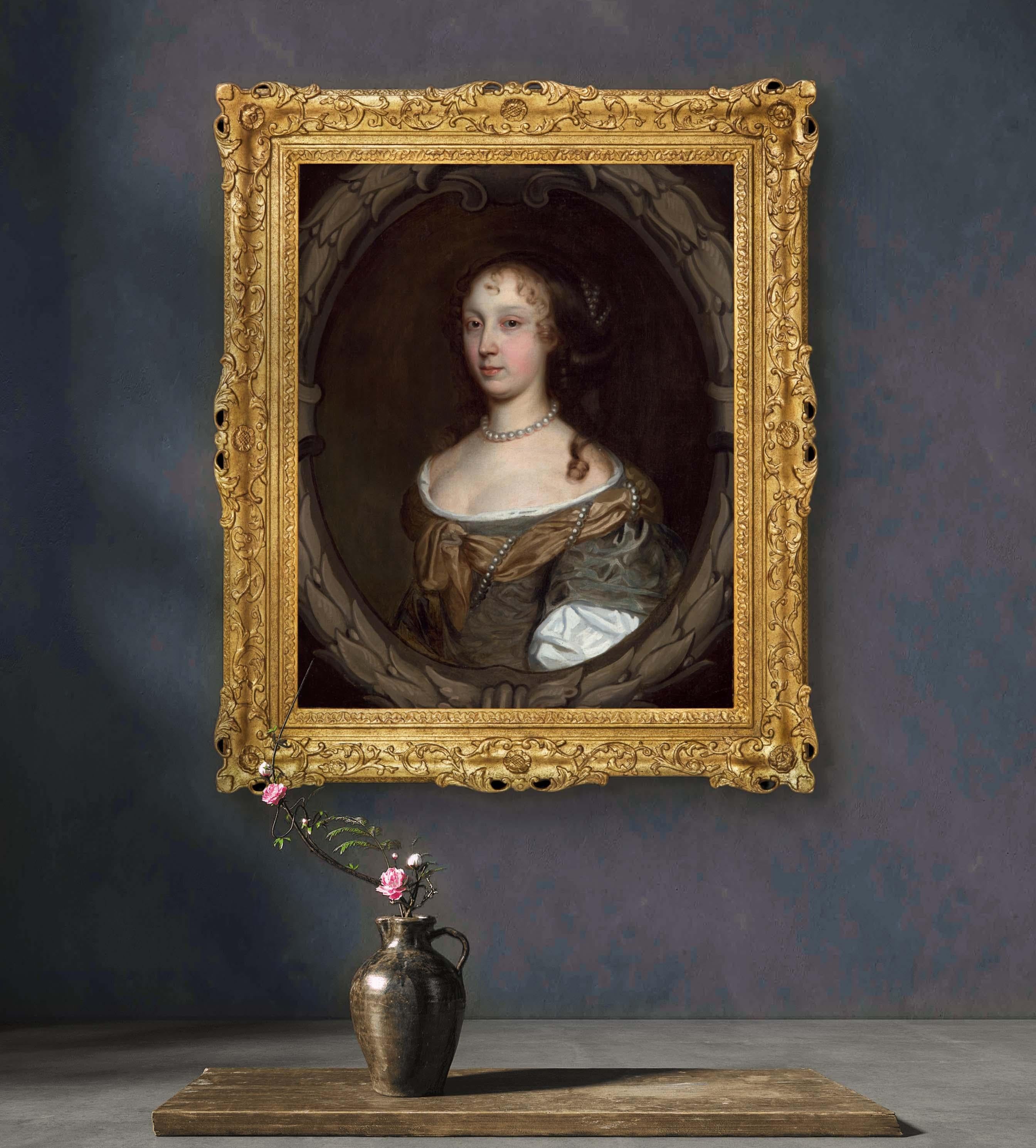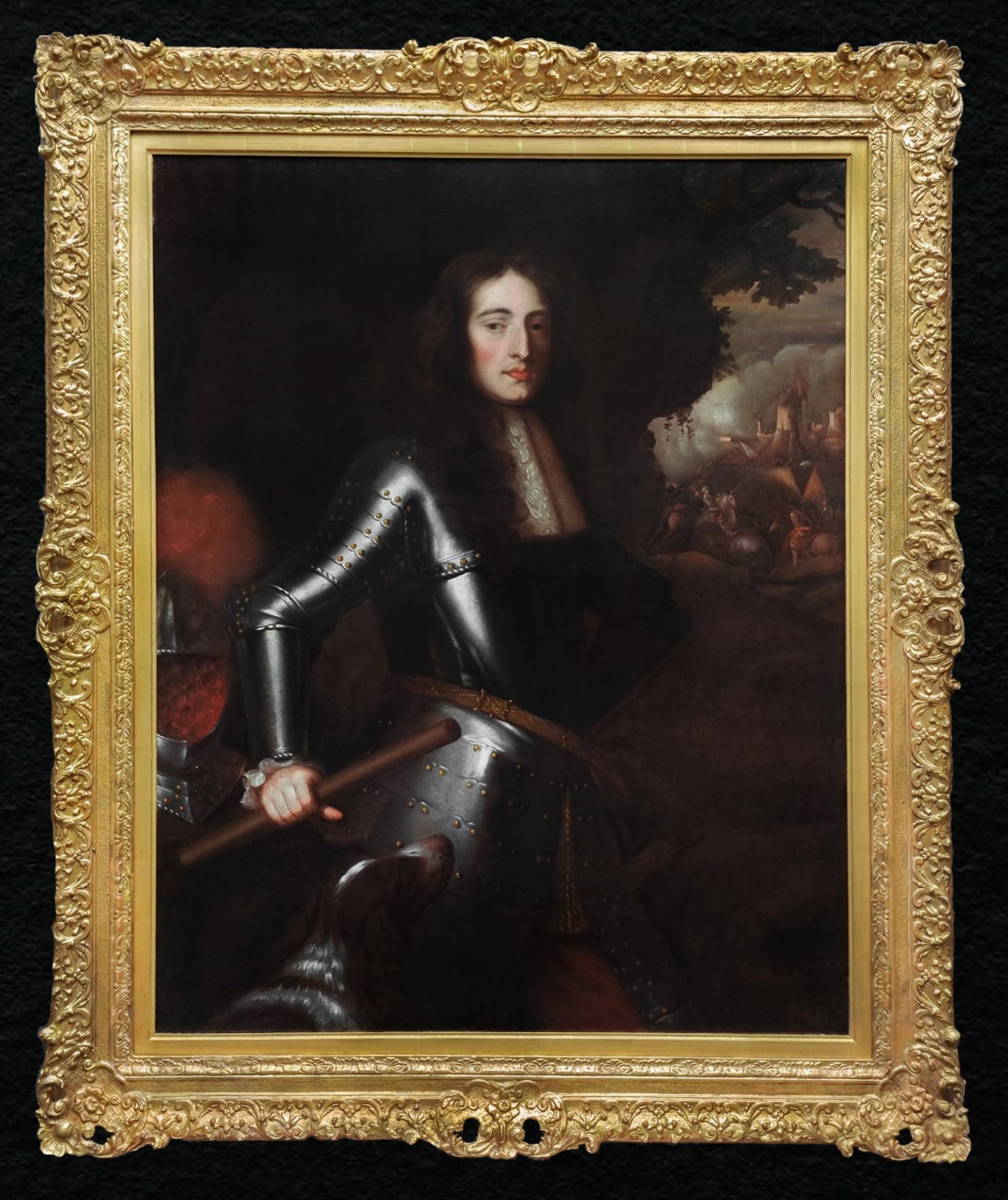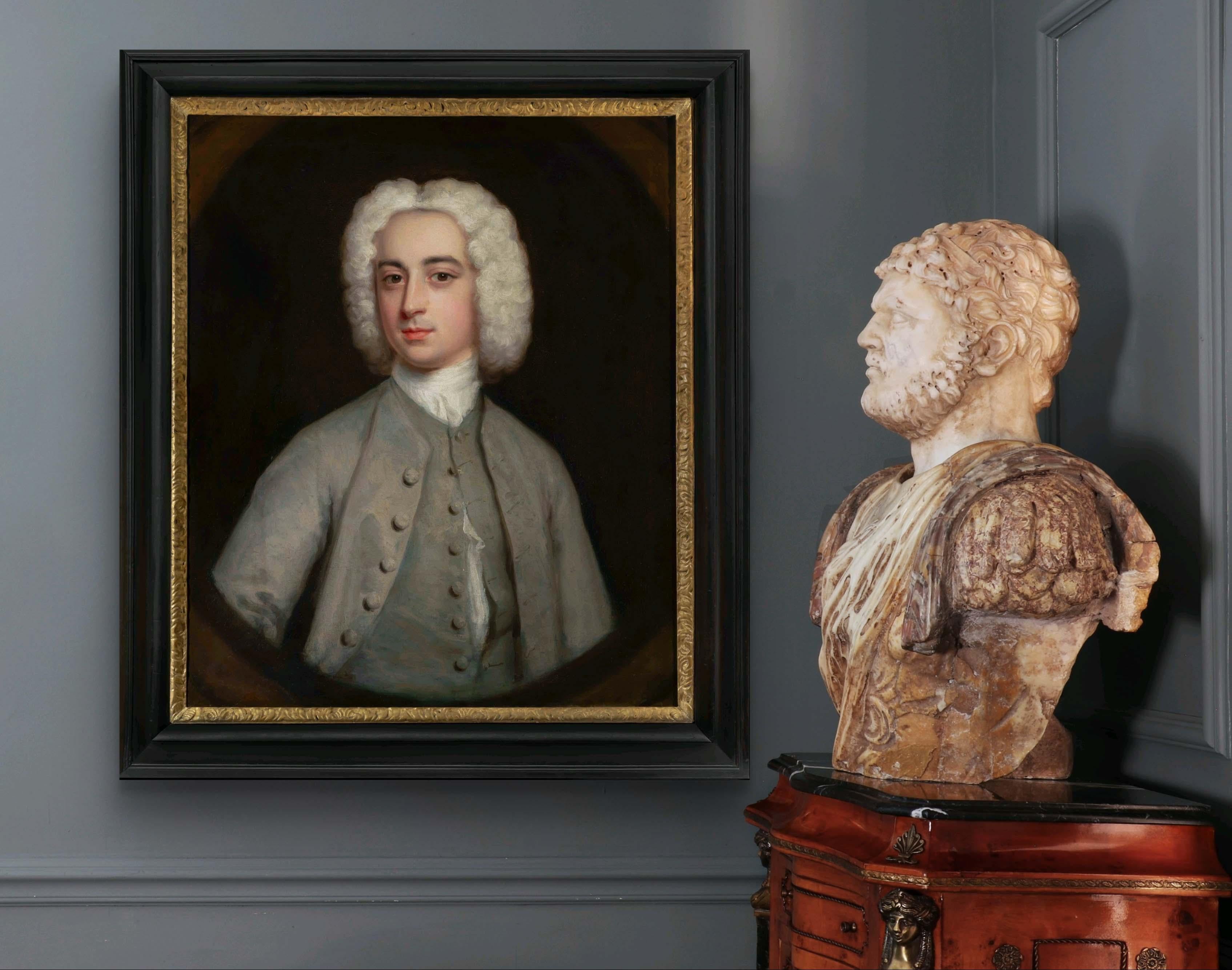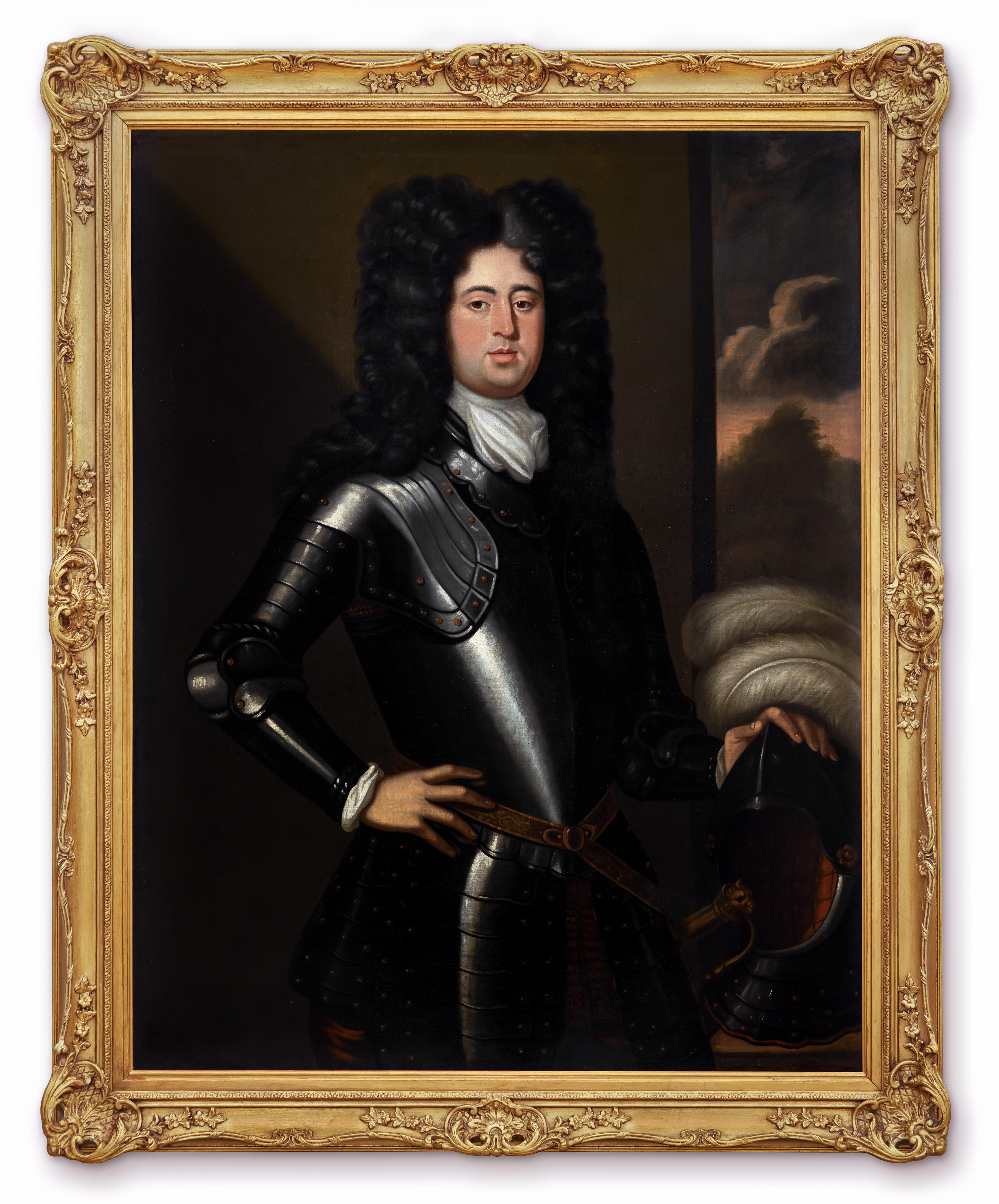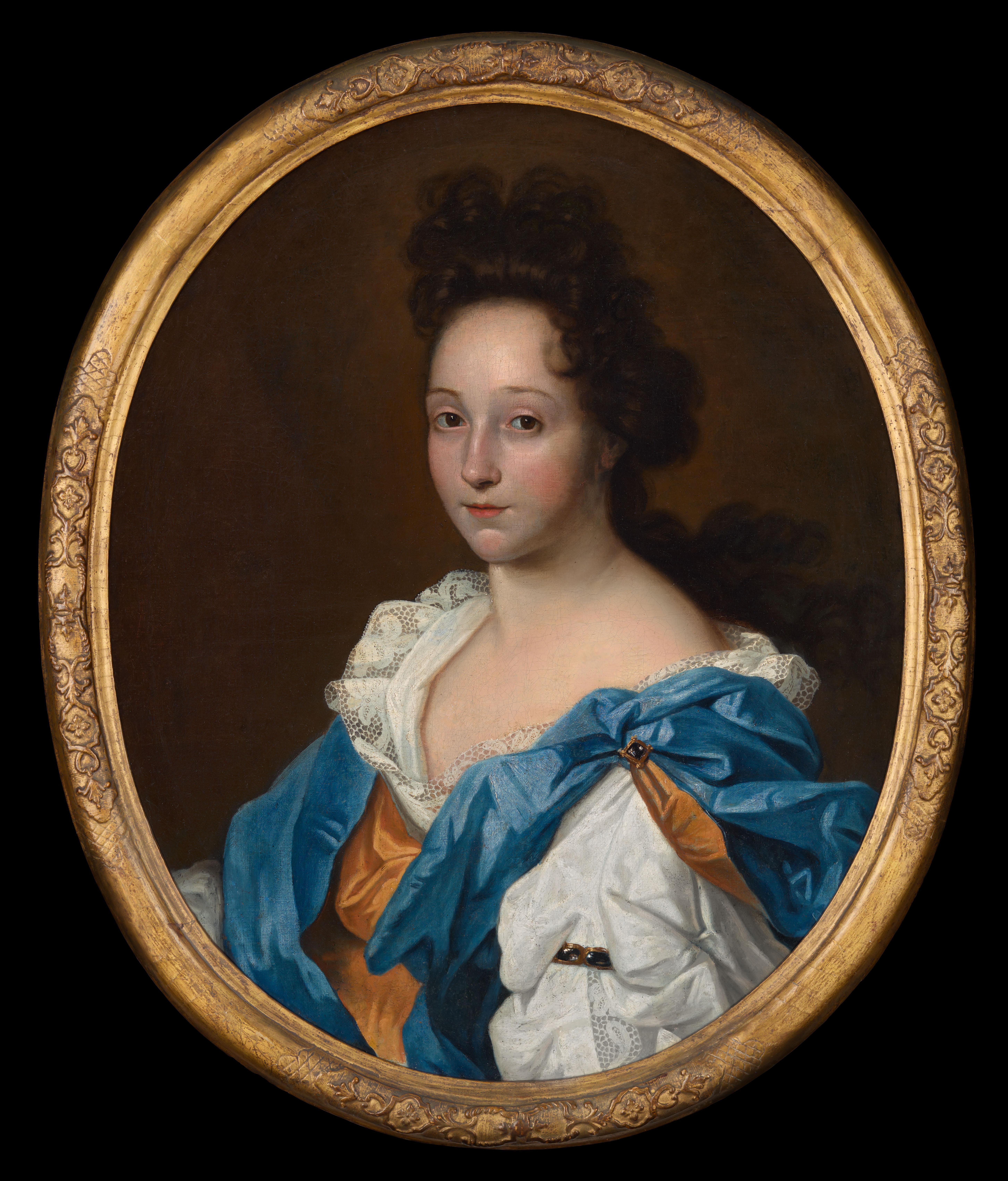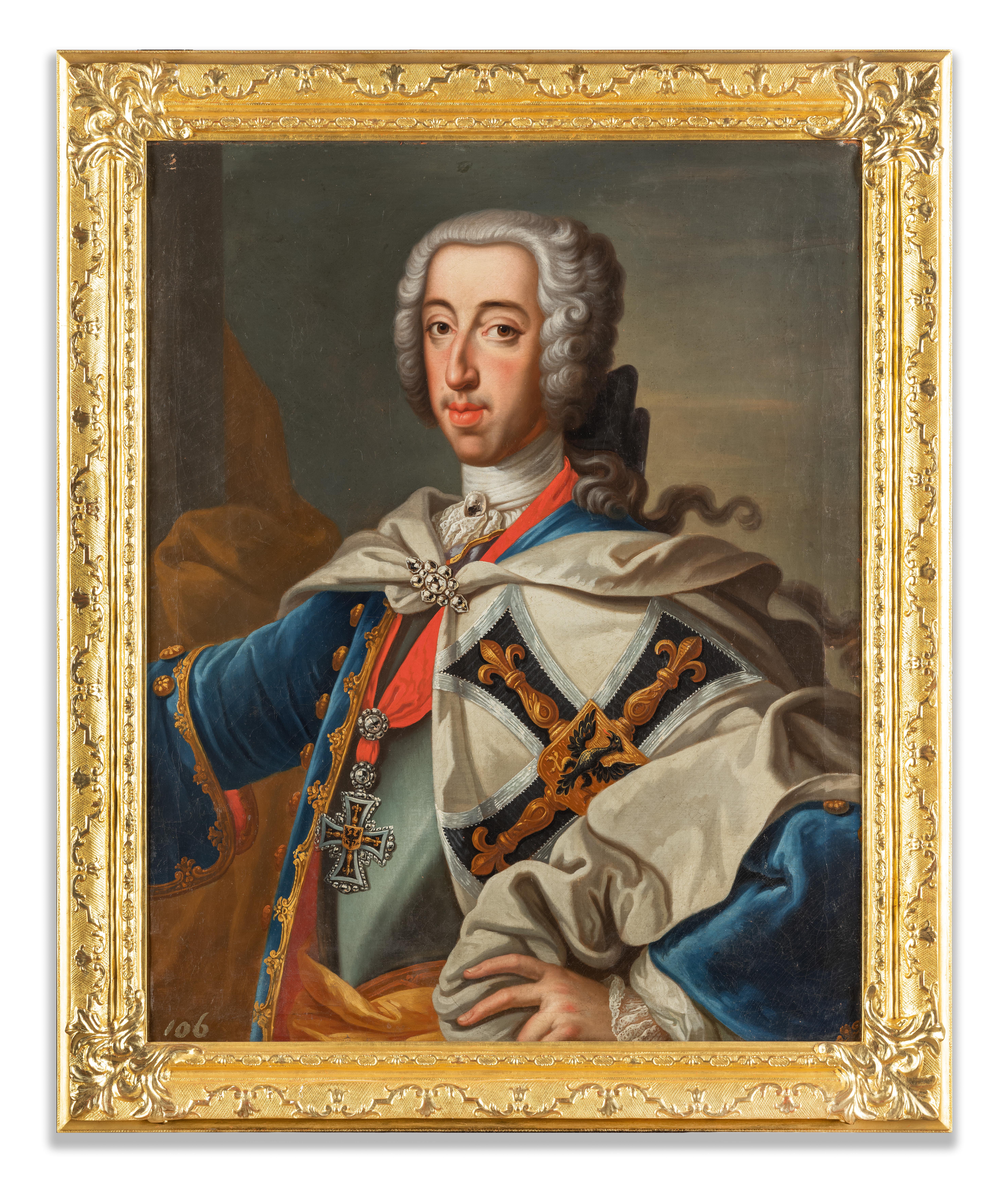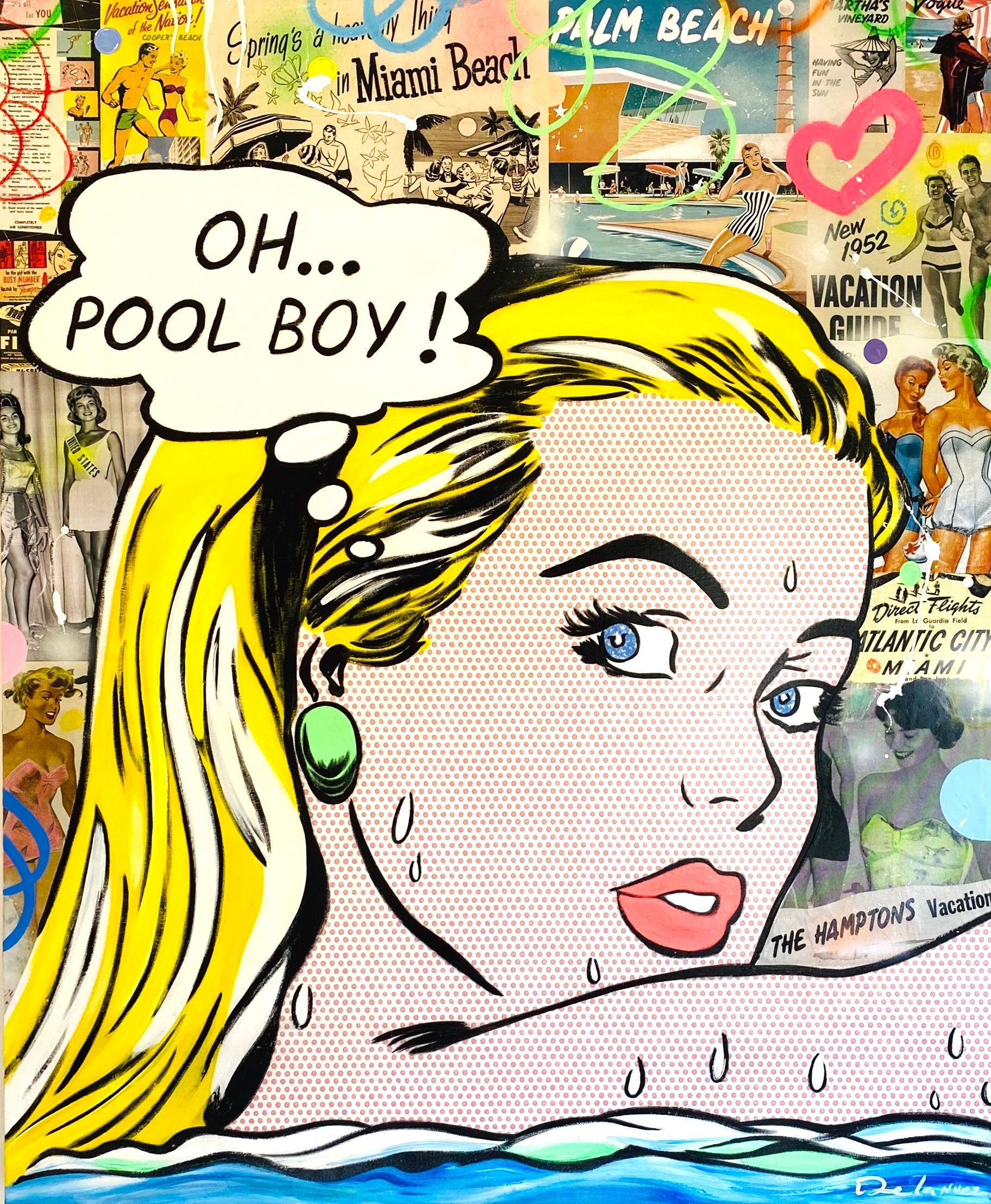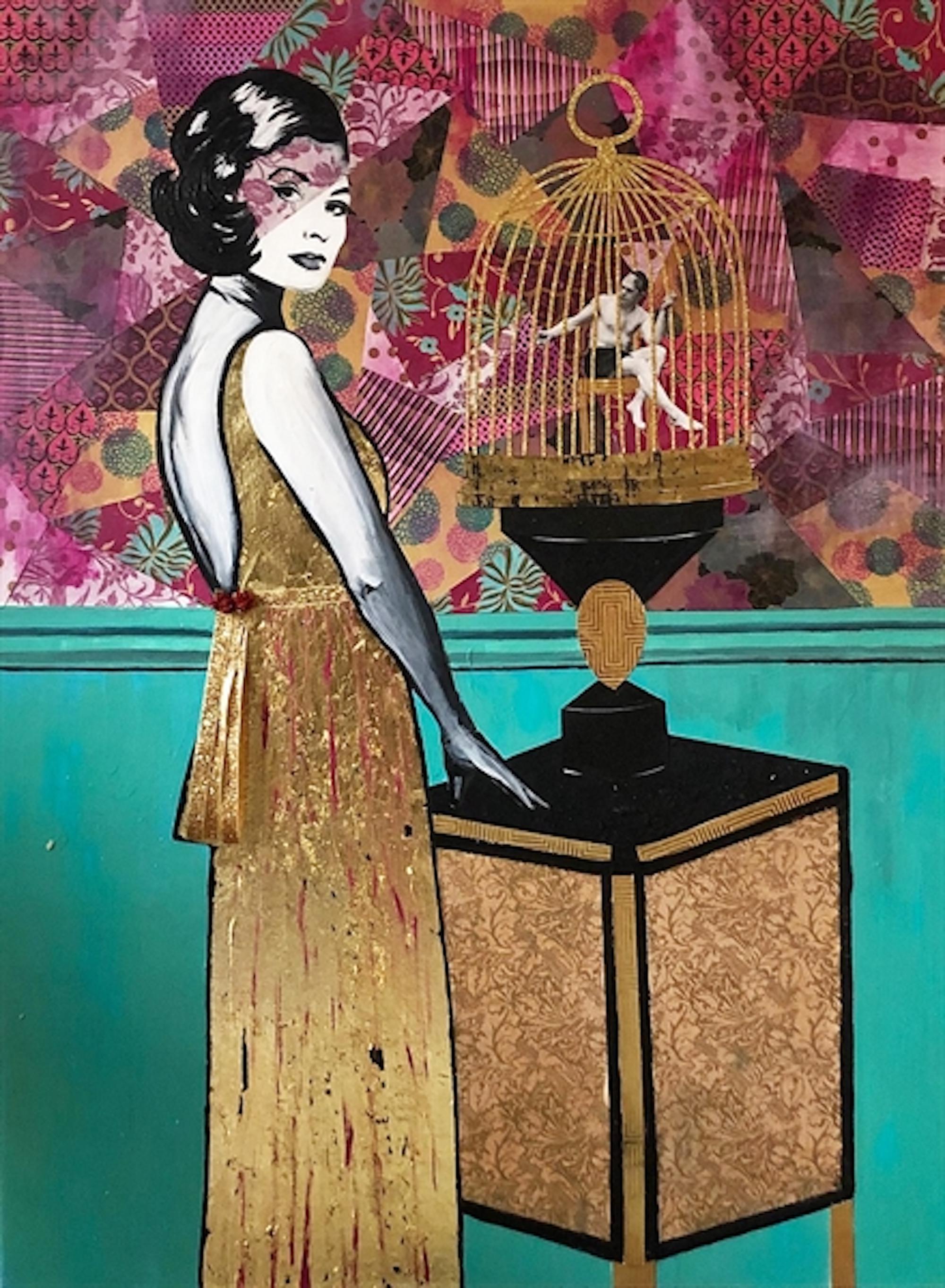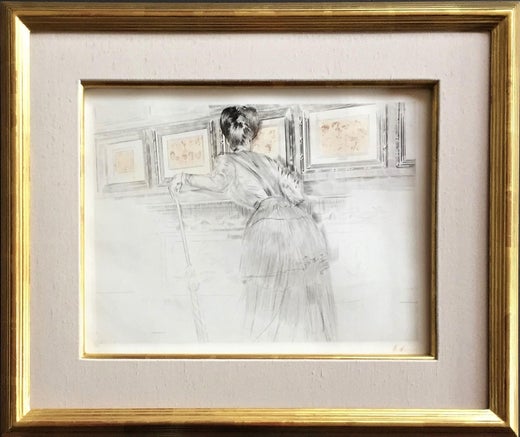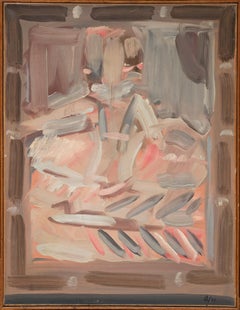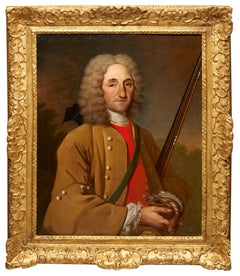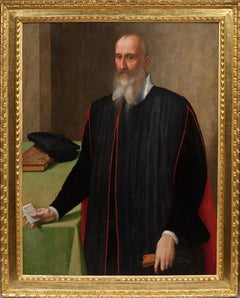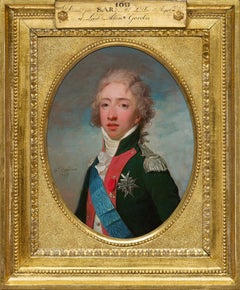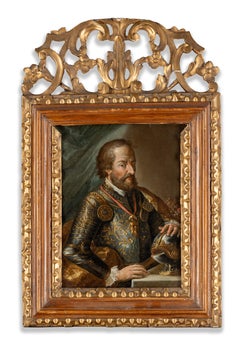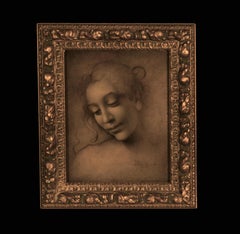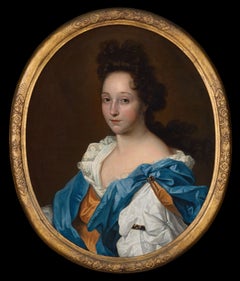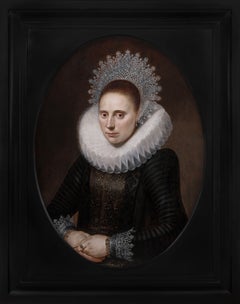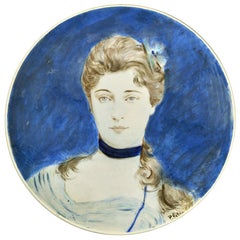
Large circular dish decorated by Paul Helleu with a portrait of his future wife
View Similar Items
Want more images or videos?
Request additional images or videos from the seller
1 of 7
Paul César HelleuLarge circular dish decorated by Paul Helleu with a portrait of his future wifecirca 1885
circa 1885
$15,000List Price
About the Item
- Creator:Paul César Helleu (1859-1927, French)
- Creation Year:circa 1885
- Dimensions:Height: 19.88 in (50.5 cm)Diameter: 19.88 in (50.5 cm)
- Medium:
- Movement & Style:
- Period:
- Condition:Signed "P. Helleu" lower right. Stamped TH Deck on the back.
- Gallery Location:PARIS, FR
- Reference Number:1stDibs: LU1568211699512
Paul César Helleu
Rich impression with dramatic drypoint burr and tone no other artist epitomizes the whole atmosphere of elegance and hedonistic pleasure which pervaded Paris society at the first decade of the century as does Helleu. A close friend of Proust and the inspiration for one of the principal characters in La Recherche du Temps Perdu, Helleu’s whole life style echoed the incomparable elegance and flow of his drawing, the sheer style of his art, and his eye for the poses of the beautiful women who were his friends and his patrons. During the 1870’s, Helleu had come to know the painters of Impressionism and also artists Sargent and Whistler who became his special friends and inspiration. By the early 1880’s, he had already developed the quality of expressive sweeping line, which is the essence of his drawing, but in 1885 he was encouraged by Tissot to try working on prints in drypoint. At this time, Tissot had decided, after the death of his lover and model Kathleen Newton, to travel to the Holy Land on an artistic pilgrimage. Having decided he would no longer engrave, he gave Helleu his diamond stylus…a literal and figurative “passing of the baton”. It was in the incision and texture of drypoint that his art was to reach one of its greatest peaks. He had an innate feel for the balance between a lightly curving stroke and the deeply cut highly tonal burr of the strongest drypoint. Around the turn of the century he started to combine drypoint with multi-inking in colors, the areas of color restricted to such touches as the bows on the hats, the hair color or the red of the lips. The plate was drawn at a single sitting, and then the color inks were brushed onto it. The results are some of the most splendid and decorative of all Belle Époque prints.
About the Seller
5.0
Vetted Professional Seller
Every seller passes strict standards for authenticity and reliability
Established in 2020
1stDibs seller since 2021
10 sales on 1stDibs
Typical response time: 2 hours
Authenticity Guarantee
In the unlikely event there’s an issue with an item’s authenticity, contact us within 1 year for a full refund. DetailsMoney-Back Guarantee
If your item is not as described, is damaged in transit, or does not arrive, contact us within 7 days for a full refund. Details24-Hour Cancellation
You have a 24-hour grace period in which to reconsider your purchase, with no questions asked.Vetted Professional Sellers
Our world-class sellers must adhere to strict standards for service and quality, maintaining the integrity of our listings.Price-Match Guarantee
If you find that a seller listed the same item for a lower price elsewhere, we’ll match it.Trusted Global Delivery
Our best-in-class carrier network provides specialized shipping options worldwide, including custom delivery.More From This Seller
View AllInfanta - Study Number 6, a 1960 painting by Fermin Aguayo after Velázquez
Located in PARIS, FR
Initialled and dated lower right "a/60", countersigned and dated on the back "aguayo 60".
A breath of modernity animates this iconic work, inspired by Velázquez' portrait of the Inf...
Category
1960s Modern Portrait Paintings
Materials
Canvas, Paper, Oil
Portrait of Julien Prieur the bailiff of the Marquis d'Armentières as a Hunter
By Jean-Baptiste Oudry
Located in PARIS, FR
This portrait depicts us the trusted confidant of the Conflans d'Armentières family. More precisely, Julien Prieur was the fiscal procurator of the Marquisate of Armentières, playing...
Category
1730s Old Masters Portrait Paintings
Materials
Canvas, Oil
Portrait of Senator Bartolomeo Panciatichi by Santi di Tito (1574)
Located in PARIS, FR
This recently rediscovered portrait of Santi di Tito depicts a Florentine senator, with a letter in his hand indicating that the painting was executed in 1574 when the sitter was 66 years old. On the basis of these clues, it is tempting to view it as a portrait of Bartolomeo Panciatichi, who was painted some thirty years before by Bronzino (1503 - 1572). While the treatment of the hands recalls the Florentine tradition of Mannerist portraits, the comparison with Bronzino's portrait illustrates Santi di Tito's search for greater realism, despite the stereotyped composition.
1. Santi di Tito, Counter-Reformation painter and portraitist
Santi di Tito was the great painter of the Florentine Counter-Reformation. He proposed a new artistic language that broke away from Mannerism.
Little is known about his training in Florence (perhaps alongside Bronzino or Baccio Bandinelli), but this period of training enabled him to join the Company of Saint Luke, the guild of Florentine painters, in 1554. Between 1560 and 1564, Santi di Tito spent time in Rome, where he frequented the workshop of Taddeo Zuccari. This stay had a fundamental influence on his work, thanks to the discovery of the late work of Raphael, but also his encounters with the painters Francesco Salviati and Federico Barocci.
Around 1565, Santi di Tito returned to Florence, where he remained until the end of his life, dividing his talents between the creation of important religious paintings and countless portraits. He became one of the city's leading painters, distinguishing himself, in particular, in the creation of large religious compositions in which the spirit of the Counter-Reformation was reflected.
In 1568, Santi di Tito became a member of the Confraternity of Saint Thomas Aquinas...
Category
16th Century Old Masters Portrait Paintings
Materials
Poplar, Oil
Two royal portraits (the Duc d'Angoulême and the Duc de Berry) by H.P. Danloux
Located in PARIS, FR
These two royal portraits are a major historical testimony to the stay of the Comte d'Artois (the future Charles X) and his family in Edinburgh in 1796-1797. Given by the sitters to Lord Adam Gordon, the Governor of Edinburgh, and kept by family descent to this day, these two portraits provide us with a vivid and spontaneous image of the Duc d’Angoulême and his brother the Duc de Berry. Danloux, who had emigrated to London a few years before, demonstrate his full assimilation of the art of British portrait painters in the brilliant execution of these portraits.
1. Henri-Pierre Danloux, a portraitist in the revolutionary turmoil
Born in Paris in 1753, Henri-Pierre Danloux was first a pupil of the painter Nicolas-Bernard Lépicié (1735 - 1784) and then, in 1773, of Joseph-Marie Vien (1716 - 1809), whom he followed to Rome when, at the end of 1775, Vien became Director of the Académie de France. In Rome he became friends with the painter Jacques-Louis David (1748 - 1825).
Returning to France around 1782, he settled in Lyon for a few years before returning to Paris in 1785. One of his first portraits was commissioned by the Baroness d'Etigny, the widow of the former Intendant of the Provinces of Gascony, Bearn and Navarre Antoine Mégret d'Etigny (1719 – 1767). He then became close to his two sons, Mégret de Sérilly and Mégret d'Etigny, who in turn became his patrons. In 1787, this close relationship with the d'Etigny family was further strengthened by his marriage to Antoinette de Saint-Redan, a relative of Madame d'Etigny. After his marriage, he left for Rome and did not return to France until 1789. It was during the winter of 1790-1791 that he painted one of his masterpieces, the portrait of Baron de Besenval. Set in a twilight atmosphere, this portrait of an aristocrat who knows that his death is imminent symbolizes the disappearance of an erudite and refined society which would be swept away by the French Revolution.
The Jacobin excesses led Danloux to emigrate to England in 1792; many members of his family-in-law who remained in France were guillotined on 10 May 1794. Danloux enjoyed great success as a portrait painter in England before returning to France in 1801.
During his stay in England, Danloux was deeply under the influence of English portraitists: his colors became warmer (as shown by the portrait of the Duc d'Angoulême that we are presenting), and his execution broader.
2. Description of the two portraits and biographical details of the sitters
The Duc d'Angoulême (1775-1844) was the eldest son of the Comte d'Artois, the younger brother of King Louis XVI (the future King Charles X), and his wife Marie-Thérèse of Savoie. He is shown here, in the freshness of his youth, wearing the uniform of colonel-general of the "Angoulême-Dragons" regiment.
He is wearing the blue cordon of the Order of the Holy Spirit, which was awarded to him in 1787, and two decorations: the Cross of Saint-Louis and the Maltese Cross, as he was also Grand Prior of the Order of Malta.
Born on 16 August 1775 in Versailles, Louis-Antoine d'Artois followed his parents into emigration on 16 July 1789. In 1792, he joined the émigrés’ army led by the Prince de Condé. After his stay in Edinburgh (which will be further discussed), he went to the court of the future King Louis XVIII, who was in exile at the time, and in 1799 married his first cousin Marie-Thérèse Charlotte of France, the daughter of Louis XVI and the sole survivor of the royal family. The couple had no descendants. He became Dauphin of France in 1824, upon the accession to the throne of his father but played only a minor political role, preferring his military position as Grand Admiral. Enlisted in Spain on the side of Ferdinand VII, he returned home crowned with glory after his victory at Trocadero in 1823.
He reigned for a very short time at the abdication of Charles X in 1830, before relinquishing his rights in favor of his nephew Henri d'Artois, the Duc de Bordeaux. He then followed his father into exile and died on 3 June 1844 in Gorizia (now in Italy).
His younger brother, the Duc de Berry, is shown in the uniform of the noble cavalry of the émigrés’ Army. He is wearing the blue cordon of the Order of the Holy Spirit, awarded to him in May 1789, and the Cross of Saint-Louis (partly hidden by his blue cordon).
Born on 24 January 1778 in Versailles, Charles-Ferdinand d'Artois also followed his parents into emigration and joined the émigrés’ army in 1792. After his stay in Edinburgh, he remained in Great Britain, where he had an affair with Amy Brown...
Category
1790s Old Masters Portrait Paintings
Materials
Canvas, Oil, Wood Panel
Portrait of Monsieur Aubert, a ceremonial portrait by Nicolas de Largillière
By Nicolas de Largillière
Located in PARIS, FR
Provenance :
Arnold S. Kirkeby (1901-1962)
Donated by Arnold S. Kirkeby to the Los Angeles County Museum of Art in 1955, where it remained until its sale at Sotheby's, New York on Ja...
Category
1720s Old Masters Portrait Paintings
Materials
Oil
A circular dish decorated by Paul Helleu with a Portrait of a Woman
Located in PARIS, FR
This dish, inspired by the bellas of the Italian Renaissance, bears witness to the fruitful collaboration that began in 1882 between the ceramist Théodore Deck and the young artist P...
Category
1880s Impressionist More Art
Materials
Earthenware, Glaze
You May Also Like
Portrait of Emperor Ferdinand I. Prague School, 17th Century, Copper, Old Master
Located in Greven, DE
Unknown artist
Prague School
Portrait of Emperor Ferdinand I. (1503-1564)
17th century
Oil on copper, 21,3 x 16,8 cm
Provenance:
Private collection, Pennsylvania, until 2016
This work by an unknown artist is a semi-portrait in predominantly brown-green tones.
brown-green tones of the emperor Ferdinand I, who was crowned emperor in 1558.
Ferdinand I of the Habsburg dynasty, who was crowned emperor in 1558.
in a suit of armour lavishly decorated with gold ornaments.
The portrait of Ferdinand...
Category
17th Century Baroque Portrait Paintings
Materials
Copper
$17,919 Sale Price
40% Off
Eli
Located in Mokena, IL
Eli, 2020
Oil on Panel with Carved and Gilded Frame, 11.5 x 13.5 inches
An embodiment of Renaissance portraiture, Varpucanskis’s “Eli” is distinguished by its gentle charm and mat...
Category
21st Century and Contemporary Renaissance Portrait Paintings
Materials
Gold Leaf
$17,500
Portrait of a Lady in White Chemise, Russet & Blue Drapery c.1695, Oil Painting
By Harman Verelst
Located in London, GB
This lavish portrait, painted circa 1695, is an exquisite example of the type of portrait in vogue during the last quarter of the seventeenth century. It is evident that the artist ...
Category
17th Century Old Masters Portrait Paintings
Materials
Canvas, Oil
Portrait of a Lady in an Elaborate Ruff & Lace Coif c.1610-20, Dutch Old Master
Located in London, GB
This magnificent oil on panel portrait, presented by Titan Fine Art, is a splendid example of the sumptuous female portraits that were painted for members of the upper echelons of society during the early part of the 1600’s. The artist has rendered this portrait with meticulous attention to detail and the surface effects of the fine materials. The elaborate lace coif and cuffs are painstakingly delineated, as is the bold black damask, and sumptuous gold decoration of her skirt and stomacher, which is wonderfully preserved and quite remarkable considering the age of the work and the fact that darker pigments are particularly vulnerable to fading and wear. This work with its spectacular depiction of costume is of absolute quality, it can be rated as one of the best works in the artist’s oeuvre and as such it is an important and splendid example of Dutch portraiture.
The Dutch Golden Age of painting was a period in Dutch history, roughly spanning the 17th century, in which Dutch trade, science, military, and art were among the most acclaimed in the world. Dutch explorers charted new territory and settled abroad. Trade by the Dutch East-India Company thrived, and war heroes from the naval battles were decorated and became national heroes. During this time, The Dutch Old Masters began to prevail in the art world, creating a depth of realistic portraits of people and life in the area that has hardly been surpassed. The Golden Age painters depicted the scenes that their discerning new middleclass patrons wanted to see. This new wealth from merchant activities and exploration combined with a lack of church patronage, shifted art subjects away from biblical genres.
Dress was a key component in portraits, and the exuberant attire reiterates the incredible wealth of this woman. The sitter will have visited the artist’s workshop and inspected examples on display. They would have chosen the size and the sort of composition and on that basis negotiated the price – which would have also been determined by the complexity of the clothing and the jewels that were to be depicted, and by the materials to be used. When all was considered, this portrait would have cost the sitter (or her husband) a substantial sum.
The colour black was regarded as humble and devout yet at the same time refined and sophisticated and the most expensive colour of fabric to dye and to maintain. Citizens spent fortunes on beautiful black robes. Such uniformity must also have had a psychological side-effect and contributed to a sense of middle-class cohesion; the collective black of the well-to-do burgess class will have given its members a sense of solidarity. The colour was always an exciting one for artists and when this portrait was painted there were at least fifty shades of it, and as many different fabrics and accoutrements. Artists went to great lengths to depict the subtle nuances of the colour and the fabrics and textures and how they reflected light and it was an ideal background against which gold and crisp white lace could be juxtaposed to dramatic effect.
The sitter is either a married women or a widower as is evident by the clothing that she wears and the position, toward her right, it is highly likely that this portrait was once a pendant that hung on the right-hand side of her husband’s portrait as was convention at the time. She wears a vlieger which was a type of sleeveless over-gown or cape worn by well-to-do married women in the late 16th and early 17th centuries. Variations with short sleeves or high shoulder rolls are known. Sometimes sleeves were attached with aiglets, and often slits were made to allow belts or the hands to pass through. Three-piece vlieger costumes of this kind were standard items of clothing in portraits of the women of the civic elite in the period 1600-40 and was a variant of the Spanish ‘ropa’ and served as a trademark of well-to-do married burgher women. Girls and unmarried woman, including beguines, wore a bouwen (a dress with a fitted bodice and a skirt that was closed all round) instead. This clear distinction between apparel for married and unmarried women is clear not only from inventories and trousseau lists, but also from contemporary sources such as the Dutch Spanish dictionary published by Juan Rodrigues in 1634. In it, a bouwen is described as a ‘ropa de donzella’ (over-gown worn by a virgin) and a vlieger as a ‘ropa de casada’ (overgown worn by a married woman). It is striking how few women are depicted wearing a bouwen, unless they are part of a group, family or children’s portrait and it can therefore be assumed that independent portraits of unmarried women were seldom commissioned. It is also believed that the clothing worn in these portraits existed and were faithfully reproduced when cross-referenced with the few exact documents. These sources also demonstrate that clients wanted their clothing to be depicted accurately and with this in mind precious garments and jewels were often left in the painter’s studio.
The prominent white lawn molensteenkraag (or millstone ruff) is held up by a wire supportasse and was reserved only for the citizens that could afford this luxurious item that often required 15 meters of linen batiste. The fabulous wealth of this sitter is also evident by the elaborate lace coif and cuffs which have been exquisitely depicted; lace was often literally copied by artists in thin white lines over the completed clothing.
The gold bracelet with jewels is a type that was evidently fashionable as it is seen in a number of portraits during the 1610s and 1620. Clothing and jewellery were prized possessions and were often listed in inventories of estates and passed down from generation to generation. There were a great number of jewellers of Flemish origin working at all the courts and cities of Europe, competing with the Italians, and then the French, adapting themselves to the tastes and positions of their patrons and the raw materials available in the country where they worked. The fashion for jewels “in the Flemish style” succeeded that of the Italian style.
Cornelis van der Voort, who was probably born in Antwerp around 1576, came to Amsterdam with his parents as a child. His father, a cloth weaver by trade, received his citizenship in 1592. It is not known who taught the young Van der Voort to paint, but it has been suggested that it was either Aert Pietersz or Cornelis Ketel. On 24 October 1598 Van der Voort became betrothed to Truytgen Willemsdr. After his first wife’s death he became betrothed to Cornelia Brouwer of Dordrecht in 1613. In addition to being an artist, Van der Voort was an art collector or dealer, or both. In 1607 he bought paintings from the estate of Gillis van Coninxloo, and after an earlier sale in 1610 a large number of works he owned were auctioned on 7 April 1614. Van der Voort is documented as appraising paintings in 1612, 1620 and 1624. In 1615 and 1619 he was warden of the Guild of St Luke. He was buried in Amsterdam’s Zuiderkerk on 2 November 1624, and on 13 May 1625 paintings in his estate were sold at auction.
Van der Voort was one of Amsterdam’s leading portrait painters in the first quarter of the 17th century. Several of his group portraits are known. It is believed that he trained Thomas de Keyser (1596/97-1667) and Nicolaes Eliasz Pickenoy (1588-1650/56). His documented pupils were David Bailly (c. 1584/86-1657), Louis du Pré...
Category
17th Century Old Masters Portrait Paintings
Materials
Oil, Wood Panel
Portrait of a Lady in Green Dress & Pearl Jewellery c.1660 Painting John Wright
By John Michael Wright
Located in London, GB
In this exquisite work, painted around the time of the Great Fire of London in 1666, a beautiful young woman is wearing a green dress over a white chemise and a russet-coloured scarf...
Category
17th Century Old Masters Portrait Paintings
Materials
Canvas, Oil
Portrait of William of Orange, later William III, in Armour, Peter Lely Painting
By Sir Peter Lely
Located in London, GB
This exquisite portrait, presented by Titan Fine Art, depicts King William III, when he was Prince of Orange. The military-minded William III is portrayed as the archetypal commande...
Category
17th Century Old Masters Portrait Paintings
Materials
Canvas, Oil
